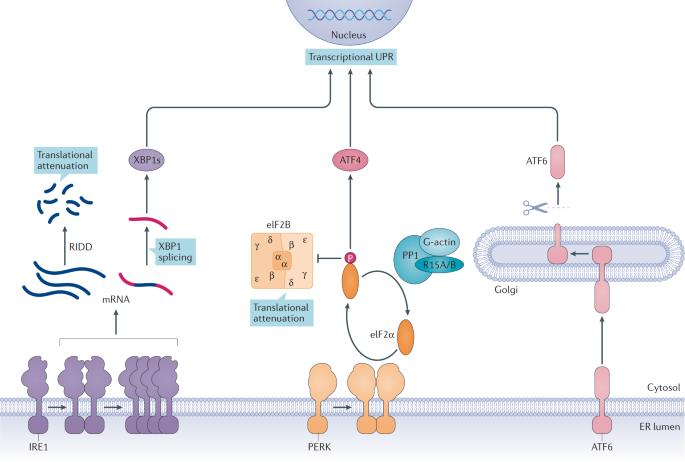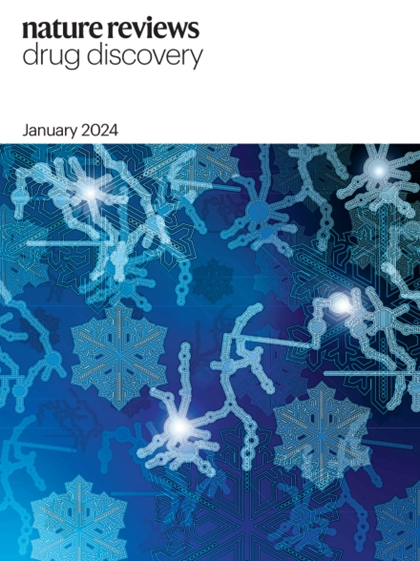针对疾病中内质网应激的药理学研究
IF 122.7
1区 医学
Q1 BIOTECHNOLOGY & APPLIED MICROBIOLOGY
引用次数: 102
摘要
错误折叠蛋白质在内质网(ER)中的积累会导致ER应激,从而激活旨在恢复蛋白质平衡的未折叠蛋白质反应(UPR)。然而,UPR 也在许多疾病中扮演着重要的病理角色,包括代谢紊乱、癌症和神经系统疾病。在过去的十年中,人们在靶向参与 UPR 的信号蛋白方面投入了大量精力,目前已有一系列类似药物的分子问世。然而,这些分子有其局限性,了解这些局限性对于将它们开发成疗法至关重要。在此,我们对现有的ER应激和UPR定向类药物分子进行了批判性回顾,强调了它们的价值和局限性。未折叠蛋白反应(UPR)旨在缓解内质网(ER)应激和恢复蛋白质平衡,但也会导致疾病。在本文中,Marciniak 等人评估了针对 ER 应激和 UPR 的小分子药物,重点介绍了 UPR 作用及其治疗调节研究最为深入的疾病。本文章由计算机程序翻译,如有差异,请以英文原文为准。

Pharmacological targeting of endoplasmic reticulum stress in disease
The accumulation of misfolded proteins in the endoplasmic reticulum (ER) leads to ER stress, resulting in activation of the unfolded protein response (UPR) that aims to restore protein homeostasis. However, the UPR also plays an important pathological role in many diseases, including metabolic disorders, cancer and neurological disorders. Over the last decade, significant effort has been invested in targeting signalling proteins involved in the UPR and an array of drug-like molecules is now available. However, these molecules have limitations, the understanding of which is crucial for their development into therapies. Here, we critically review the existing ER stress and UPR-directed drug-like molecules, highlighting both their value and their limitations. The unfolded protein response (UPR) aims to relieve endoplasmic reticulum (ER) stress and restore protein homeostasis, but also contributes to disease. Here, Marciniak et al. assess small molecules that target ER stress and the UPR, highlighting those diseases in which the role of the UPR and its therapeutic modulation have been most well studied.
求助全文
通过发布文献求助,成功后即可免费获取论文全文。
去求助
来源期刊

Nature Reviews. Drug Discovery
医学-生物工程与应用微生物
CiteScore
137.40
自引率
0.30%
发文量
227
期刊介绍:
Nature Reviews Drug Discovery is a monthly journal aimed at everyone working in the drug discovery and development arena.
Each issue includes:
Highest-quality reviews and perspectives covering a broad scope.
News stories investigating the hottest topics in drug discovery.
Timely summaries of key primary research papers.
Concise updates on the latest advances in areas such as new drug approvals, patent law, and emerging industry trends and strategies.
 求助内容:
求助内容: 应助结果提醒方式:
应助结果提醒方式:


